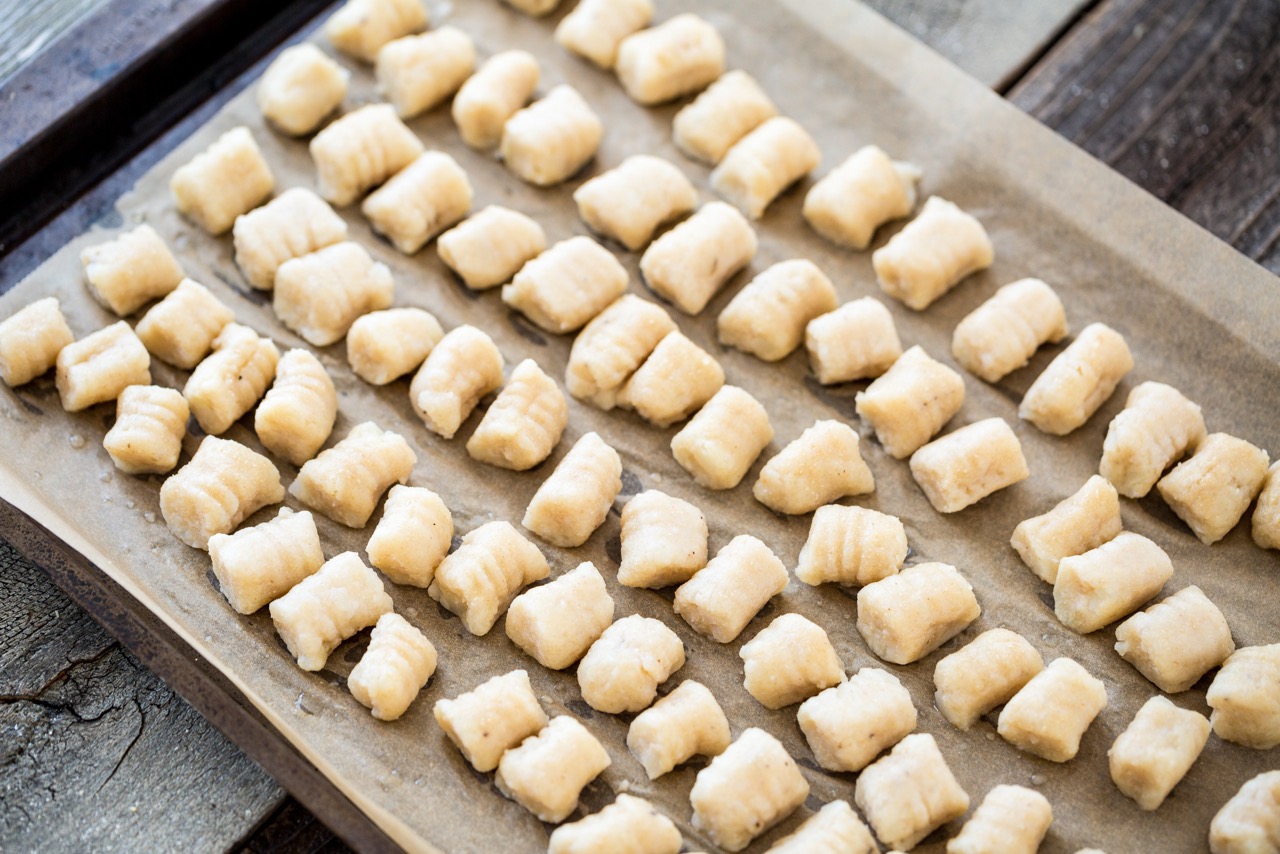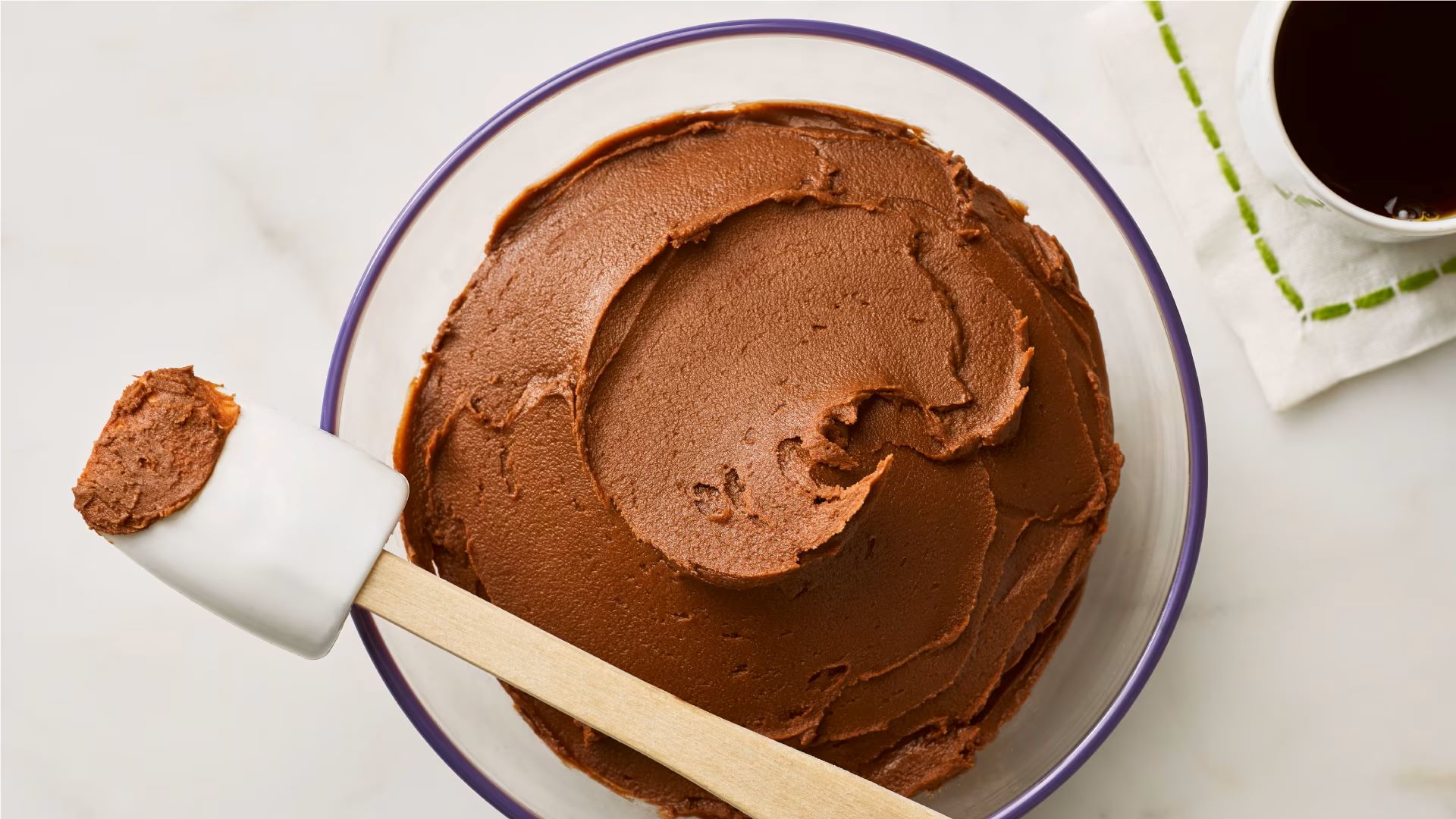

Articles
How To Store Homemade Kimchi
Modified: February 23, 2024
Discover the best way to store homemade kimchi with this comprehensive guide. Learn helpful tips and tricks for preserving the flavor and quality of your homemade creation.
(Many of the links in this article redirect to a specific reviewed product. Your purchase of these products through affiliate links helps to generate commission for Storables.com, at no extra cost. Learn more)
Introduction
Kimchi is a beloved Korean dish that is both delicious and nutritious. Made from fermented vegetables and a variety of spices, it is known for its tangy and spicy flavors. Many people enjoy making their own kimchi at home to have control over the ingredients and fermentation process. However, once you have made a batch of homemade kimchi, it is important to store it properly to maintain its freshness and flavor.
In this article, we will explore the best practices for storing homemade kimchi. We will discuss the importance of proper storage, the suitable containers to use, and the steps to take to prepare kimchi for storage. Additionally, we’ll cover the methods of refrigerating and freezing kimchi, and provide tips on how to maintain its freshness for as long as possible.
Whether you are an avid kimchi maker or a beginner, understanding how to store homemade kimchi will help you enjoy it for an extended period of time. So, let’s dive in and learn the art of keeping your homemade kimchi fresh and flavorful!
Key Takeaways:
- Properly storing homemade kimchi is essential for preserving its flavor, texture, and nutritional value. Choose the right container, prepare kimchi for storage, and refrigerate or freeze it to enjoy its deliciousness for an extended period.
- Maintaining the freshness of homemade kimchi involves using clean utensils, keeping it submerged, minimizing air exposure, and practicing FIFO. With proper storage and hygiene, you can savor the delightful flavors and benefits of kimchi for weeks or even months.
Read more: How To Store Kimchi
Why Store Homemade Kimchi
Storing homemade kimchi is essential to preserve its taste, texture, and nutritional value. Here are a few reasons why it is important to store your homemade kimchi properly:
- Extended Shelf Life: Homemade kimchi is a fermented food that undergoes a natural preservation process. Proper storage techniques can help prolong its shelf life and prevent spoilage.
- Flavor Development: Kimchi continues to ferment even after it’s made. Storing it allows the flavors to develop and intensify, resulting in a more complex and delicious taste.
- Convenience: Storing kimchi properly ensures that you always have a fresh supply on hand. This makes it more convenient to incorporate it into your meals or enjoy it as a side dish whenever you like.
- Cost Savings: Making a large batch of kimchi at once and storing it properly can save you money in the long run. You can take advantage of seasonal produce or bulk purchases, reducing the cost per serving.
By understanding the benefits of storing homemade kimchi, you can fully appreciate the value of taking the time and effort to store it properly.
Best Practices for Storing Homemade Kimchi
To ensure that your homemade kimchi stays fresh and maintains its flavor, follow these best practices for storing:
1. Choose the Right Container
The container you choose plays a significant role in preserving the quality of your kimchi. Look for a container that is airtight and non-reactive, such as glass jars or food-grade plastic containers. Avoid using metal containers, as they can react with the acidic nature of kimchi and affect its taste.
2. Prepare Kimchi for Storage
Before storing your homemade kimchi, make sure it is properly fermented. This usually takes around two to five days at room temperature, depending on your desired level of acidity. Taste a small amount to ensure it has the desired tanginess. If it’s not fermented enough, leave it out for a bit longer. If it’s too sour, you can still store it, but the sourness may intensify.
Read more: How To Store Kimchi Without Fridge
3. Pack it Tightly
When transferring your kimchi to the storage container, pack it tightly to eliminate any air pockets. This helps prevent mold formation and ensures even fermentation. Use a clean utensil or gloved hands to press the kimchi down firmly into the container.
4. Leave Some Headroom
Allow some space at the top of the container to accommodate the expansion of gases during the fermentation process. Seal the container tightly, leaving enough room for the kimchi to breathe. This will prevent excessive pressure buildup and potential leaks.
5. Store in a Cool Place
Kimchi is best stored in a cool and dark place, such as a refrigerator or a cool cellar. The cold temperature slows down the fermentation process, preserving the flavors and texture of the kimchi. Aim for a temperature between 32°F and 39°F (0°C and 4°C) for optimal storage.
6. Rotate Containers
If you have multiple containers of kimchi, rotate them periodically. This helps maintain consistent fermentation throughout your batches and prevents any one container from fermenting too quickly or becoming overly sour.
By following these best practices, you can ensure that your homemade kimchi stays fresh and delicious for weeks or even months!
Read more: How To Store Kimchi After Opening
Choosing the Right Container
When it comes to storing homemade kimchi, selecting the right container is crucial for maintaining its quality and flavor. Here are some factors to consider when choosing the container:
Airtight
An airtight container is essential for storing kimchi. This helps prevent the entry of oxygen, which can lead to spoilage. Look for containers with airtight seals or lids that provide a secure and tight fit. This will help maintain the proper texture and flavor of the kimchi.
Non-Reactive Material
Choose containers made of non-reactive materials like glass or food-grade plastic. Avoid metal containers, as they can react with the acidic nature of the kimchi, altering its taste and potentially causing discoloration. Glass jars with rubber gaskets or plastic containers with tight-fitting lids are ideal choices.
Size and Shape
The size and shape of the container depend on your storage needs and preferences. It’s a good idea to have a variety of container sizes to accommodate different batch sizes of kimchi. Smaller containers are convenient for storing smaller portions or for taking kimchi on the go. Larger containers are great for storing large batches or for households that consume kimchi frequently.
Read more: How To Store Homemade Dough
Transparency
Consider using transparent containers to easily monitor the fermentation process. This allows you to check the texture, color, and level of fermentation without opening the container. Being able to visually inspect your kimchi can help you determine when it’s ready to be consumed or if any issues, such as mold, have occurred.
Easy to Clean
Opt for containers that are easy to clean and maintain. Some containers have removable parts, making them easier to clean thoroughly. It’s important to keep your kimchi container clean to prevent any cross-contamination or off flavors in future batches.
Remember, the container you choose should provide a safe and conducive environment for proper kimchi fermentation and storage. By selecting the right container, you can ensure that your homemade kimchi stays fresh and maintains its delicious flavor for an extended period of time.
Preparing Kimchi for Storage
Before storing your homemade kimchi, there are important steps to take to ensure its quality and longevity. Here is a guide on how to prepare your kimchi for storage:
1. Transfer Kimchi to a Clean Container
Start by transferring your fermented kimchi from the fermentation vessel to a clean storage container. Use clean utensils or gloved hands to handle the kimchi and avoid introducing any contaminants.
Read more: How To Store Homemade Guacamole
2. Remove Excess Liquid
If your kimchi has released excess liquid during fermentation, drain it before transferring to the storage container. Excess liquid can dilute the flavors and lead to a mushy texture over time. However, do not discard this liquid as it can be used as a flavoring agent or added back to the kimchi if desired.
3. Taste and Adjust Seasonings
Before sealing the container, taste a small portion of the kimchi and assess the flavor. If necessary, you can adjust the seasonings by adding more spices, garlic, or ginger to your liking. Keep in mind that some flavors may continue to develop during storage, so it’s best not to make drastic adjustments at this stage.
4. Add a Kimchi Weight
To ensure the kimchi remains fully submerged in its brine, consider using a kimchi weight. A weight helps prevent the kimchi from being exposed to air, which can lead to spoilage. There are various kimchi weights available in the market, or you can use a clean, food-grade rock or a small glass jar filled with water as a makeshift weight.
5. Seal the Container
Once your kimchi is packed tightly and a weight is added, seal the storage container tightly with the lid. Ensure that the lid is airtight to prevent the entry of oxygen, which can negatively affect the fermentation process and the quality of the kimchi.
By following these preparation steps, you can store your homemade kimchi properly, maximizing its freshness and flavor. Now, let’s explore the different methods of storing kimchi: refrigerating and freezing.
Read more: How To Store Homemade Gummies
Refrigerating Homemade Kimchi
Refrigeration is one of the most common methods of storing homemade kimchi. Follow these steps to refrigerate your kimchi:
1. Wait for Fermentation
Ensure that your kimchi has undergone the initial fermentation process before refrigerating it. The fermentation period typically takes 2 to 5 days at room temperature, but you can adjust it according to your preference for flavor and acidity. The tanginess will continue to develop slowly in the refrigerator, but at a slower rate.
2. Transfer to the Refrigerator
Once your kimchi is ready for storage, transfer the container to the refrigerator. Place it in a spot with a consistent temperature, away from any potential sources of heat or direct sunlight.
3. Keep it Sealed
Ensure that the container remains tightly sealed throughout its time in the refrigerator. This helps maintain the flavors and prevents cross-contamination with other food items.
Read more: How To Store Homemade Stock
4. Temperature and Shelf Life
Set your refrigerator to a temperature between 32°F and 39°F (0°C and 4°C) for optimal storage. The cool temperature slows down the fermentation process, preserving the flavors and texture of the kimchi. When stored properly, homemade kimchi can remain fresh for several weeks to a few months, depending on the level of fermentation and your personal preferences.
5. Maintain Hygiene
Remember to practice good hygiene when handling kimchi stored in the refrigerator. Use clean utensils when scooping out kimchi and avoid introducing any contaminants. If you notice any signs of spoilage, such as off smells or mold, discard the affected portion of the kimchi.
Refrigerating homemade kimchi is a convenient and effective way to store it for extended periods while maintaining its flavors and nutritional benefits. However, if you have an excess amount of kimchi or want to store it for even longer, freezing is an option to consider.
Freezing Homemade Kimchi
Freezing is a great option for storing homemade kimchi for an extended period. Here’s how you can freeze your kimchi:
1. Prepare Kimchi for Freezing
Prior to freezing, ensure that your kimchi is properly fermented. Allow it to ferment for the desired amount of time at room temperature, ensuring it is tangy and flavorful.
Read more: How To Store Homemade Scones
2. Portion the Kimchi
Divide your kimchi into smaller portions based on your future usage. This will make it easier to thaw and use only the amount you need without having to defrost the entire batch.
3. Packaging Options
There are a few packaging options you can choose from:
- Airtight Containers: Transfer the kimchi to airtight containers made of glass or food-grade plastic. Leave some headspace to allow for expansion during freezing.
- Freezer Bags: Place the kimchi in freezer bags, removing as much air as possible before sealing tightly.
- Ice Cube Trays: If you want smaller portions, you can freeze the kimchi in ice cube trays. Once frozen, transfer the kimchi cubes into a resealable freezer bag.
4. Label and Date
Label each container or bag with the contents and the date of freezing. This will help you keep track of how long the kimchi has been frozen and maintain its quality.
5. Freeze
Place the containers or bags in the freezer and ensure they are kept in a stable position. Lay flat or stack them neatly to save space, if possible.
Read more: How To Store Homemade Cupcakes
6. Thawing and Consumption
To use the frozen kimchi, simply transfer the desired amount to the refrigerator and allow it to thaw slowly overnight. Once thawed, consume the kimchi within a few days for the best flavor and texture.
It’s important to note that freezing may slightly change the texture of the kimchi. The vegetables may become softer, but the flavors and nutrients will still be present, making it a convenient option for long-term storage.
Whether you choose to refrigerate or freeze your homemade kimchi, always practice proper food safety and hygiene measures. Enjoy your delicious kimchi for months to come by storing it with care!
Tips for Maintaining the Freshness of Homemade Kimchi
To ensure that your homemade kimchi stays fresh and delicious for as long as possible, consider these handy tips:
1. Use Clean Utensils
Always use clean utensils when handling kimchi. This helps prevent cross-contamination and keeps unwanted bacteria or molds from entering the container.
2. Keep Kimchi Submerged
Ensure that the kimchi is fully submerged in its brine or juice at all times. This helps maintain its flavor and prevents it from becoming dry or developing an unappetizing texture. If needed, press down on the kimchi to keep it immersed or use a weight to keep it submerged.
Read more: How To Store Homemade Waffles
3. Minimize Exposure to Air
When opening the container to take out kimchi, minimize the exposure to air and work quickly to reseal it tightly. Oxygen exposure can lead to spoilage and affect the quality of the kimchi.
4. Store in Small Portions
If you frequently use kimchi, consider dividing it into smaller portions before storing. This allows you to thaw and use only what you need, avoiding repeated thawing and refreezing.
5. Rotate Containers
When you have multiple containers of kimchi in the refrigerator or freezer, rotate them regularly. This helps ensure each container is used within a reasonable time frame, preventing any batch from being forgotten and getting too old.
6. Monitor Shelf Life
Keep track of the shelf life of your kimchi. Label containers with the date of preparation or freezing and make a note of when to consume it by. Properly stored kimchi in the refrigerator can typically last for several weeks, while frozen kimchi can maintain its quality for several months.
Read more: How To Store Homemade Sourdough
7. Practice First-In, First-Out (FIFO)
Follow the “first-in, first-out” rule when using your stored kimchi. Consume the oldest batch before using the newer ones. This ensures that no container is left unused for an extended period, reducing the risk of spoilage.
8. Adjust Seasonings After Thawing
If you find that the flavors have mellowed during storage, adjust the seasonings after thawing. Add more spices, garlic, or other seasonings to enhance the taste and bring back the desired level of flavor.
By following these tips, you can maintain the freshness and quality of your homemade kimchi, ensuring every bite remains a delight!
Conclusion
Storing homemade kimchi properly is crucial for maintaining its freshness, flavors, and nutritional benefits. By employing the best practices outlined in this article, you can ensure that your homemade kimchi remains delicious and enjoyable for an extended period of time.
Choosing the right container, preparing kimchi for storage, and refrigerating or freezing it are key steps in preserving its quality. Always opt for airtight, non-reactive containers and pack the kimchi tightly to remove air pockets. Properly ferment the kimchi before storing and use clean utensils to handle it. Refrigeration slows down fermentation and allows for longer preservation, while freezing provides a convenient storage option for extended periods.
To maintain the freshness of your kimchi, remember to keep it submerged in its brine, minimize exposure to air, and practice good hygiene. Rotate containers, monitor shelf life, and follow the first-in, first-out rule to prevent spoilage and ensure that all batches are consumed in a timely manner.
With the tips provided, you can enjoy your homemade kimchi for weeks or even months, savoring the distinct flavors and health benefits it offers. So, whether you’re making a small or large batch, take the time to store your kimchi properly and savor its deliciousness in every bite!
Frequently Asked Questions about How To Store Homemade Kimchi
Was this page helpful?
At Storables.com, we guarantee accurate and reliable information. Our content, validated by Expert Board Contributors, is crafted following stringent Editorial Policies. We're committed to providing you with well-researched, expert-backed insights for all your informational needs.






0 thoughts on “How To Store Homemade Kimchi”